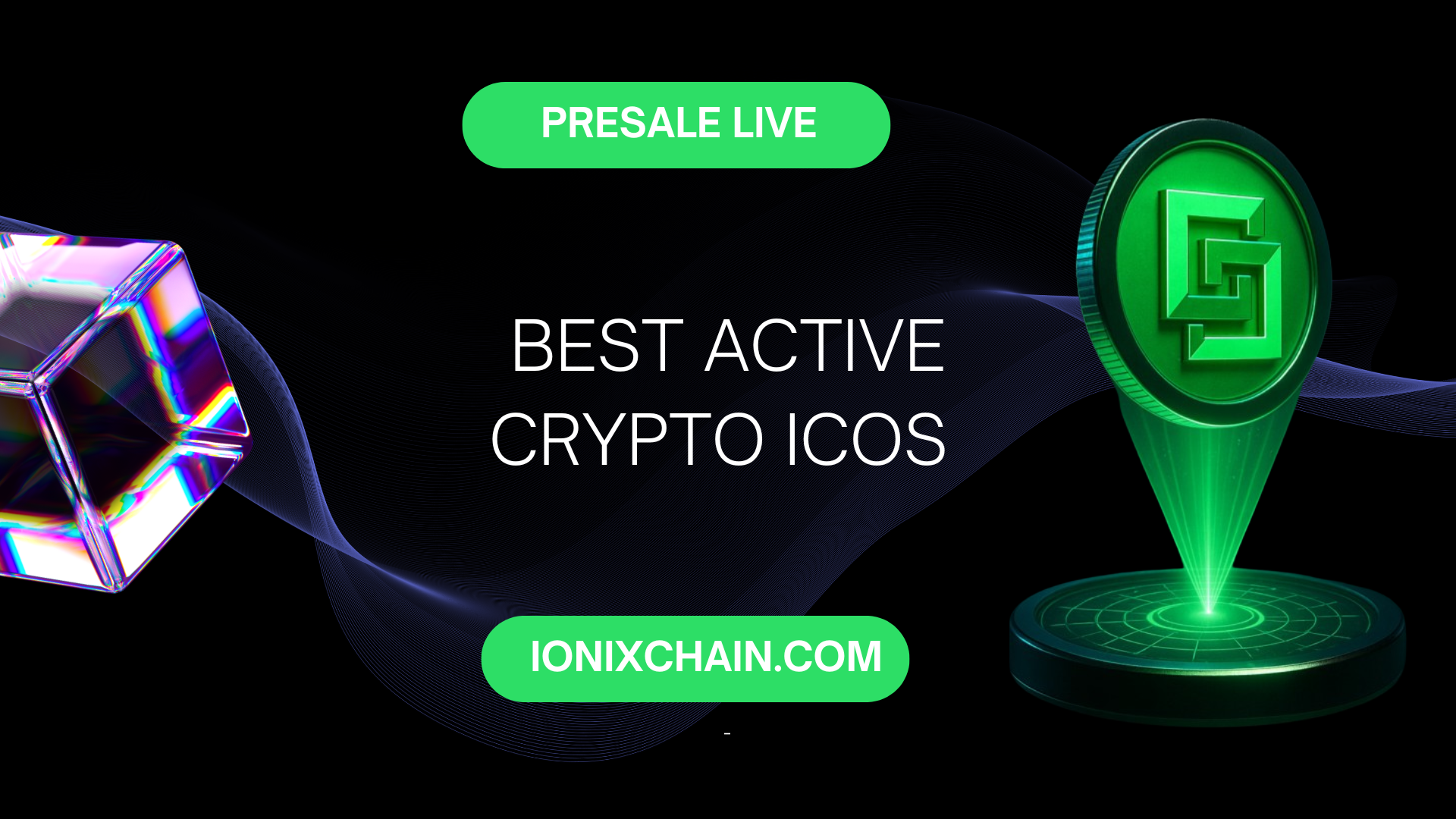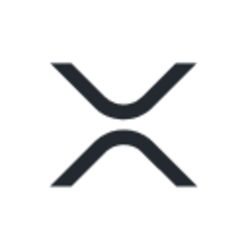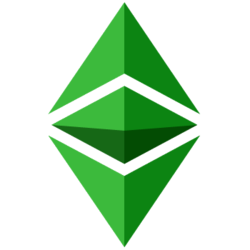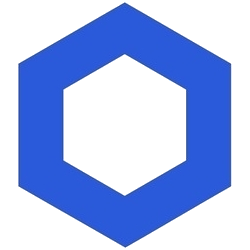Coin Launch Space is here to give you clear, accurate, and trustworthy information about crypto. Our team is made up of experts with real experience in crypto, finance, and new tech. Every article and page we publish is carefully reviewed by skilled editors to make sure it’s up to our high standards. We take pride in offering honest, easy-to-understand reviews based on real knowledge. Check out our editorial policy and see how we test and review crypto assets.
The cryptocurrency landscape in 2025 continues to evolve rapidly, with artificial intelligence emerging as a transformative force reshaping blockchain infrastructure. Among the most prominent projects capturing investor attention is IONIX Chain, which positions itself as a revolutionary AI-powered Layer 1 blockchain network. As traditional cryptocurrency markets experience volatility and established networks face scalability limitations, IONIX Chain presents itself as a next-generation solution addressing fundamental challenges through technological innovation.
The project launched its presale campaign in early 2025, completing initial development milestones including blockchain prototype creation, comprehensive whitepaper publication, and assembly of a globally distributed technical team. According to project documentation, IONIX Chain has raised significant capital during its ongoing presale phases, building a community exceeding 50,000 participants across various digital platforms including Telegram, Discord, and social media channels.
What distinguishes IONIX Chain within the competitive crypto presale market is its integration of artificial intelligence directly into blockchain consensus mechanisms. Traditional blockchain networks typically rely on computational power or stake-based validation, whereas IONIX Chain introduces what it terms “Quantum AI Consensus” – a proprietary system designed to optimize transaction processing, network security, and scalability through machine learning algorithms that adapt in real-time to network conditions.
Project Background and Development Timeline
IONIX Chain emerged from recognition that existing blockchain architectures face fundamental limitations in processing speed, energy efficiency, and adaptability to changing network demands. The project’s founders identified an opportunity to merge artificial intelligence capabilities with blockchain technology, creating infrastructure capable of supporting next-generation decentralized applications requiring high throughput and intelligent automation.
Development commenced in late 2024 with conceptual design and technical architecture planning. The first quarter of 2025 marked completion of the initial blockchain prototype incorporating Quantum AI Consensus mechanisms, alongside publication of the project’s technical whitepaper detailing system architecture, consensus algorithms, and economic models. During this period, the core development team was assembled, comprising blockchain engineers, artificial intelligence specialists, and cryptocurrency industry veterans from various global locations.
The second quarter of 2025 saw launch of the public presale campaign, accompanied by community building initiatives that rapidly attracted tens of thousands of participants. Strategic partnerships were established with cryptocurrency media platforms including CoinTelegraph and The Block, providing increased visibility within the broader cryptocurrency ecosystem. Security auditing processes began during this phase, with independent blockchain security firms CertIK and Solid Proof conducting comprehensive smart contract reviews.
Throughout the third and fourth quarters of 2025, the project roadmap indicates plans for testnet deployment under the name “IonixTest,” featuring AI-driven Ethereum Virtual Machine extensions, public GitHub repository access, development of AI analytics indexers, and establishment of a $5 million developer grant program to incentivize ecosystem growth. The planned mainnet launch is targeted for the first half of 2026, contingent upon successful testnet operations and continued development progress.
Blockchain Technology and Technical Architecture
Quantum AI Consensus Mechanism
At the core of IONIX Chain’s technological proposition lies its Quantum AI Consensus system, which represents a departure from traditional blockchain validation methods. Rather than relying solely on computational work or economic stake, this mechanism incorporates artificial intelligence algorithms that analyze network patterns, predict transaction loads, and dynamically adjust validation processes to optimize performance and security simultaneously.
The system utilizes machine learning models trained on blockchain transaction data to identify optimal validation strategies under varying network conditions. These models continuously evolve as the network processes transactions, theoretically improving efficiency over time through adaptive learning. The consensus mechanism combines elements of Proof-of-Stake validation, where token holders participate in network security through staking, with Directed Acyclic Graph architecture that enables parallel transaction processing rather than sequential block creation.
Hybrid Proof-of-Stake and DAG Architecture
IONIX Chain implements a hybrid architectural approach combining traditional Proof-of-Stake validation with Directed Acyclic Graph data structures. In standard blockchain designs, transactions are grouped into sequential blocks, creating potential bottlenecks as network usage increases. The DAG structure instead allows multiple transaction chains to be processed simultaneously, with AI algorithms coordinating validation across parallel pathways to maintain consensus and prevent conflicts.
This architectural design theoretically enables the network to achieve 500,000 transactions per second – a throughput significantly exceeding traditional blockchain networks. For context, established networks like Bitcoin typically process single-digit transactions per second, while more advanced platforms like Ethereum process tens of transactions per second. The claimed performance of IONIX Chain places it in territory comparable to centralized payment processing systems while maintaining decentralized validation.
Adaptive Smart Contracts
Beyond consensus and architecture, IONIX Chain introduces the concept of Adaptive Smart Contracts – self-executing agreements that incorporate artificial intelligence to modify their behavior based on real-world conditions and historical performance data. Traditional smart contracts execute predefined logic rigidly, while adaptive contracts can theoretically adjust parameters, optimize execution pathways, and respond to changing circumstances without requiring manual intervention or contract redeployment.
These contracts are designed to learn from execution history, identifying patterns that indicate optimal parameter settings for various conditions. For example, a decentralized finance lending contract might adjust interest rates automatically based on liquidity conditions, default risk patterns, and broader market indicators analyzed through AI algorithms. This capability positions IONIX Chain to support more sophisticated decentralized applications requiring intelligent automation.
Cross-Chain Interoperability
Recognizing that blockchain fragmentation represents a significant challenge to widespread adoption, IONIX Chain has implemented cross-chain bridge infrastructure enabling asset transfers and communication with established networks including Ethereum, Solana, and Binance Smart Chain. The IONX token functions as a settlement currency within this multi-chain architecture, facilitating value transfer across different blockchain environments.
This interoperability approach allows IONIX Chain to leverage the liquidity pools and user bases of mature blockchain ecosystems while providing its own high-performance infrastructure for AI-intensive applications. Cross-chain bridges are secured through multi-signature validation and smart contract escrows, with transactions verified across both source and destination networks to prevent double-spending and ensure asset integrity.
Tokenomics and Economic Model
| Allocation Category | Percentage | Purpose |
|---|---|---|
| Public Sale | 20% | Presale and public distribution to retail investors |
| Treasury | 17% | Protocol development and operational reserves |
| Ecosystem Development | 15% | Grants, partnerships, and ecosystem growth initiatives |
| Team Allocation | 10% | Core development team with vesting schedules |
| Liquidity Provision | 8% | Exchange liquidity pools and market making |
| Private Sale | 7% | Early institutional and strategic investors |
| Staking Rewards | 6% | Validator incentives and staking yield distribution |
| Token Burn | 5% | Deflationary mechanism reducing total supply |
| Seed Round | 5% | Initial development funding from earliest backers |
| Marketing | 5% | Brand awareness and community growth campaigns |
The total initial supply of IONX tokens is established at 2,150,000,000 tokens, with allocation across ten distinct categories designed to balance various stakeholder interests. The public sale allocation of 20% provides substantial token availability for retail investors participating through presale phases and subsequent exchange listings. This represents a higher percentage than many cryptocurrency projects allocate to public distribution, potentially supporting broader token holder diversity.
Treasury and ecosystem development allocations totaling 32% provide resources for long-term project sustainability, funding protocol upgrades, developer grants, partnership initiatives, and operational expenses without requiring token sales that might create downward price pressure. The team allocation of 10% is subject to vesting schedules that prevent immediate selling, aligning team member incentives with long-term project success.
The inclusion of a 5% token burn allocation introduces deflationary dynamics to the economic model. Token burns permanently remove cryptocurrency from circulation, theoretically increasing scarcity and supporting value appreciation assuming demand remains constant or increases. Additional burns occur through transaction fees, with a percentage of each network transaction fee permanently removed from the total supply.
Revenue Sharing Model
A distinctive feature of IONIX Chain’s economic design is its revenue sharing mechanism, whereby token holders storing IONX in non-custodial wallets receive 15% of daily gas fee revenue generated by network activity. This creates passive income opportunities for investors independent of token price appreciation, with returns directly tied to network usage volume and transaction frequency.
As the network processes transactions, users pay gas fees in IONX tokens to compensate validators and maintain network operations. A portion of these fees is distributed proportionally to all qualifying token holders based on their holdings relative to total circulating supply. This mechanism provides fundamental value beyond pure speculation, as network adoption and usage directly generate returns for token holders.
Staking Rewards and Incentive Structure
Beyond revenue sharing, IONX token holders can participate in network validation through staking, earning annual percentage yields reportedly reaching up to 12%. Staking involves locking tokens for specified periods to support network security and transaction validation, with validators receiving newly minted tokens and transaction fee shares as compensation for their participation.
The staking reward rate adjusts dynamically based on total staked supply and network security requirements. Higher staking participation reduces individual yields as rewards are distributed across more participants, while lower participation increases yields to incentivize adequate network security. This mechanism creates economic incentives for maintaining optimal security levels without excessive token lock-up that might reduce liquidity.
Use Cases and Real-World Applications
Financial Services and Decentralized Finance
The financial sector represents a primary target market for IONIX Chain applications, with artificial intelligence capabilities enabling sophisticated fraud detection, automated trading systems, and instant credit scoring mechanisms. Traditional financial fraud detection systems rely on rule-based approaches that struggle with novel attack vectors, whereas AI-powered systems can identify anomalous patterns indicating potential fraud with reported accuracy rates exceeding 99.9%.
Automated trading applications built on IONIX Chain can leverage adaptive smart contracts that adjust trading strategies based on market conditions analyzed through AI algorithms. These systems process vast quantities of market data in real-time, identifying opportunities and executing trades with sub-second latency enabled by the network’s high transaction throughput. Decentralized finance protocols including lending platforms, decentralized exchanges, and yield optimization strategies benefit from intelligent automation and rapid transaction processing.
Healthcare Data Management
Healthcare represents another significant application domain, where secure patient data sharing combines blockchain immutability with AI-driven analytics to improve diagnostic accuracy and treatment outcomes. Medical records stored on IONIX Chain benefit from cryptographic security preventing unauthorized access, while authorized healthcare providers can access comprehensive patient histories instantly across organizational boundaries.
AI algorithms analyzing medical data on the network can assist with diagnostic processes, identifying patterns in patient symptoms, test results, and medical histories that indicate specific conditions. Project materials claim these capabilities can reduce diagnosis time by up to 30%, potentially improving patient outcomes through earlier intervention and more accurate condition identification. Privacy-preserving AI techniques enable analysis without compromising patient confidentiality.
Supply Chain Optimization
Supply chain management applications leverage IONIX Chain’s combination of transparency, traceability, and predictive analytics to optimize logistics operations and reduce costs. Products tracked on the blockchain maintain comprehensive provenance records from manufacturing through final delivery, providing transparency that reduces counterfeiting and enables rapid recall identification when quality issues arise.
Predictive analytics powered by AI examine historical shipping data, weather patterns, transportation capacity, and demand fluctuations to optimize routing and inventory management. Project documentation claims these capabilities can reduce logistics costs by up to 25% through improved efficiency, reduced waste, and optimized resource allocation. Smart contracts automate payment releases based on verified delivery confirmations, reducing administrative overhead and payment delays.
Internet of Things Connectivity
The proliferation of Internet of Things devices creates demand for blockchain infrastructure capable of managing billions of connected sensors, actuators, and intelligent systems. IONIX Chain’s high transaction throughput and low-latency processing position it to serve as coordination infrastructure for IoT ecosystems spanning smart cities, industrial automation, and consumer applications.
IoT devices can transact directly with each other using IONX tokens for micropayments, with AI algorithms coordinating device behavior based on environmental conditions and operational objectives. For example, smart grid systems might automatically adjust energy distribution based on demand patterns predicted by AI analysis of historical usage data and real-time sensor readings. The low transaction fees of approximately $0.0005 per transaction make IONIX Chain economically viable for high-frequency IoT interactions.
Content Creation and Monetization
Content creators benefit from transparent monetization mechanisms enabled by blockchain technology combined with AI-powered content verification and audience analytics. Creators can publish work directly on decentralized platforms built atop IONIX Chain, receiving immediate payment through smart contracts when content is consumed or licensed, eliminating intermediaries that traditionally capture significant revenue shares.
AI algorithms verify content authenticity, detect plagiarism, and analyze audience engagement patterns to optimize content strategies. Transparent on-chain payment records ensure creators receive fair compensation based on actual usage metrics rather than opaque algorithmic distribution mechanisms employed by traditional content platforms. Non-fungible tokens representing digital art, music, or other creative works can be minted and traded with AI-generated metadata enhancing discoverability.
Growth Potential Analysis
Market Positioning and Competitive Advantages
IONIX Chain enters a cryptocurrency market characterized by thousands of blockchain projects competing for developer attention, user adoption, and investment capital. Its primary competitive differentiation centers on AI integration within core blockchain infrastructure rather than as separate applications built atop existing networks. This architectural approach theoretically enables capabilities unavailable on traditional blockchains while maintaining decentralization and security properties.
The convergence of artificial intelligence and blockchain technology represents a growing sector within the broader cryptocurrency ecosystem. As AI applications become increasingly prevalent across industries, demand for blockchain infrastructure optimized for AI workloads may accelerate. IONIX Chain positions itself at this intersection, potentially benefiting from parallel growth in both blockchain adoption and AI implementation.
Performance specifications including 500,000 transactions per second and sub-second finality place IONIX Chain’s claimed capabilities significantly above most existing blockchain networks. If these performance characteristics are achievable in production environments, the network could support applications requiring throughput and latency comparable to centralized systems while maintaining decentralization benefits. This capability gap represents a potential competitive advantage attracting developers building high-performance decentralized applications.
Adoption Drivers and Network Effects
Cryptocurrency network value correlates strongly with adoption levels, as increased usage generates transaction fees, attracts more developers building applications, and creates liquidity supporting price stability. IONIX Chain implements several mechanisms designed to incentivize adoption including developer grants totaling $5 million, revenue sharing providing passive income to token holders, and low transaction fees reducing barriers to usage.
The revenue sharing model creates financial incentives for early adoption, as initial token holders receive proportionally larger shares of gas fee revenue when total holder populations remain small. This mechanism rewards early participants while providing ongoing value through network growth. Similarly, staking rewards offering up to 12% annual yields attract token holders seeking yield-generating investments beyond pure price speculation.
Cross-chain interoperability enables IONIX Chain to leverage existing blockchain ecosystems rather than requiring entirely new user bases. Ethereum developers can theoretically deploy applications to IONIX Chain with minimal modifications, immediately accessing its performance advantages while maintaining compatibility with familiar development tools and frameworks. This reduces adoption friction compared to entirely novel blockchain architectures requiring specialized knowledge.
Partnership Strategy and Ecosystem Development
Strategic partnerships announced by IONIX Chain include collaborations with cryptocurrency media platforms CoinTelegraph and The Block, providing visibility within industry publications reaching millions of cryptocurrency enthusiasts and investors. While these partnerships primarily serve marketing and awareness functions rather than technical integrations, they contribute to community growth and project credibility within the cryptocurrency space.
Plans for exchange listings on major platforms including Binance and OKX, if successfully executed, would provide substantial liquidity and accessibility for IONX tokens. These centralized exchanges collectively serve tens of millions of users globally, representing critical infrastructure for cryptocurrency trading and investment. Listing requirements typically include security audits, minimum liquidity provisions, and compliance with regulatory frameworks, suggesting the project is pursuing institutional-grade standards.
The developer grant program allocating $5 million to ecosystem development represents investment in application creation and technical innovation. Grants reduce financial risks for developers building on IONIX Chain, potentially accelerating the pace of application development and ecosystem expansion. Successful grant programs implemented by established blockchain projects have proven effective in attracting technical talent and fostering innovation.
Roadmap and Development Milestones
The IONIX Chain roadmap outlines development progression across multiple quarters spanning 2025 through 2027. The first quarter of 2025 focused on foundational development including blockchain prototype creation, technical whitepaper publication, and team assembly. These preliminary milestones were reportedly completed on schedule, establishing the technical and organizational foundation for subsequent development phases.
The second and third quarters of 2025 encompass the current presale campaign, community building targeting 50,000 participants, and security audits by CertIK and Solid Proof. Partnerships with cryptocurrency media platforms were established during this period to increase project visibility. These milestones represent the transition from internal development to public engagement and capital raising necessary for continued operations.
The fourth quarter of 2025 targets testnet launch under the designation IonixTest, featuring AI-driven Ethereum Virtual Machine extensions enabling compatibility with existing smart contract code. Public GitHub repository access is planned, allowing open-source community participation in development. An AI analytics indexer and blockchain explorer are scheduled for deployment, providing infrastructure for application developers and users to interact with the network.
The first half of 2026 focuses on mainnet deployment with decentralized finance and non-fungible token integrations, cross-chain bridge activation, and staking program implementation. This represents the transition from testnet experimentation to production-ready infrastructure capable of supporting real-world applications and significant transaction volumes. The timeline indicates mainnet launch occurring approximately 12-18 months after presale commencement.
Exchange listings are targeted for late 2026 through early 2027, contingent upon raising $50 million through presale phases and achieving technical milestones validating network readiness. Confirmed partnerships with Binance and OKX suggest preliminary discussions regarding listing requirements and compliance frameworks. The extended timeline between presale launch and exchange listing reflects the substantial technical development required to deliver claimed capabilities.
Presale Structure and Investment Mechanics
The IONIX Chain presale operates through multiple stages with progressively increasing token prices, rewarding early participants with more favorable entry points. Initial presale pricing began at $0.015 per IONX token, with prices incrementing at each subsequent stage. Recent reports indicate pricing in the range of $0.029 to $0.035 depending on presale stage, with planned listing price of $2.00 representing substantial appreciation from initial presale levels.
This tiered pricing structure creates urgency for early participation while generating capital at increasing valuations as the project achieves milestones and builds community support. The significant multiple between presale pricing and projected listing price exceeds 5,000% from initial levels, representing extremely high potential returns for earliest investors while also indicating substantial execution risk if planned valuations prove unrealistic.
Bonus Structure and Investment Incentives
Early presale participants receive bonus tokens based on contribution amounts, structured to incentivize larger investments through progressively higher bonus percentages. The bonus tiers include 10% additional tokens for contributions between $500 and $2,499, escalating to 50% bonus tokens for investments exceeding $11,000. These bonuses effectively reduce per-token costs for larger investors while increasing total token supply beyond base allocations.
Additional Loyalty Airdrops provide up to 5% bonus tokens to early presale participants, further rewarding those accepting higher risk by investing during early project stages. Combined with revenue sharing and staking rewards, these mechanisms create multiple value accrual pathways beyond simple price appreciation, potentially appealing to investors seeking diversified return sources.
Participation Process and Payment Options
Participating in the IONIX Chain presale requires visiting the official website at ionixchain.com and connecting a Web3 wallet such as MetaMask, Trust Wallet, or Phantom through WalletConnect functionality. The presale accepts multiple cryptocurrencies including Bitcoin, Ethereum, Solana, and stablecoins USDT and USDC on both ERC-20 and BEP-20 networks, providing flexibility for investors holding various cryptocurrency assets.
After selecting the preferred payment method and specifying investment amount, participants confirm transactions through their connected wallets. IONX token allocations along with applicable bonus tokens are distributed following presale conclusion, with specific timelines dependent on stage completion and technical milestones. The smart contract address 0x733fF6DaFed473CD88ee8B1C17B050Cf2865Ea6b enables technically proficient investors to verify contract details directly on blockchain explorers.
Security Considerations and Risk Assessment
Smart Contract Audits and Security Verification
IONIX Chain has undergone security audits by two independent blockchain security firms: CertIK, which assigned a security score of 90 out of 100, and Solid Proof, which provided a rating of 85 out of 100. These audits examine smart contract code for vulnerabilities including reentrancy attacks, integer overflows, access control issues, and other common security flaws that have resulted in substantial losses across the cryptocurrency ecosystem.
Security scores in the 85-90 range indicate strong security practices with minor issues identified and addressed during audit processes. However, it should be noted that even audited projects have experienced security compromises, as audits represent point-in-time assessments that cannot guarantee future security. Ongoing monitoring, bug bounty programs, and regular security reviews are essential for maintaining long-term security posture.
The project implements post-quantum cryptography designed to resist attacks from quantum computers that could potentially compromise traditional cryptographic algorithms. AI-powered anomaly detection monitors network activity for suspicious patterns indicating potential attacks, while self-healing nodes automatically respond to detected vulnerabilities. These proactive security measures theoretically reduce attack surfaces compared to static security implementations.
Team Anonymity and Transparency Concerns
A significant risk factor identified by independent analysts involves the partially anonymous structure of the IONIX Chain team. While project materials identify leadership including CEO Joel Arterburn, CTO Sophie Müller, CMO Lucas Tan, and Chief Business Development Officer Elena Petrova, limited publicly verifiable information exists regarding their professional backgrounds, previous accomplishments, or credentials in blockchain and artificial intelligence domains.
Anonymous or pseudonymous teams are common in cryptocurrency, stemming from the cypherpunk origins of the space and privacy considerations. However, this anonymity complicates due diligence efforts and reduces accountability compared to fully doxxed teams with established professional reputations. Investors typically accept higher risk when team identities cannot be independently verified through professional networks, previous project involvement, or academic credentials.
Product Development Status and Technical Validation
As of the current presale phase, IONIX Chain has not launched a publicly accessible mainnet, testnet, or demonstrable product validating claimed technical capabilities. Project roadmaps indicate testnet deployment planned for late 2025 with mainnet following in 2026, meaning current investment decisions rely on technical specifications and promises rather than operational networks investors can independently evaluate.
This lack of verifiable product represents substantial execution risk, as ambitious technical claims require successful implementation to generate value. The blockchain industry contains numerous examples of projects with impressive technical documentation that struggled to deliver functional products meeting specifications. Until testnet and mainnet deployments enable independent performance verification, claims regarding transaction throughput, latency, and AI capabilities remain theoretical.
Disclaimer: The content provided reflects the authors personal opinions and is influenced by current market conditions. Conduct thorough research before making any cryptocurrency investments. The author and the publication are not liable for any financial losses you may incur.













